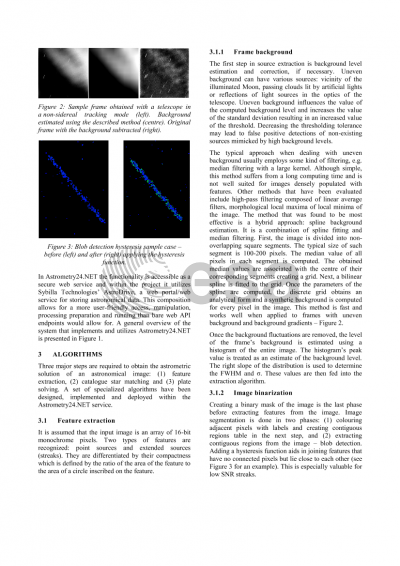
Using the angular momenta of multiple satellites simultaneously narrows the current uncertainty in the MW’s mass by $\sim$25\%, showing promise for improved constraints on the mass of M31 and ultimately the LG. I show that the orbital angular momenta of satellite galaxies is the most reliable estimator of host halo mass over time. Very Long Baseline Interferometry (VLBI) is a highly accurate technique, used since the 1970s in geodesy that has delivered groundbreaking scientific. As we enter the high-precision era, it will play an increasingly important role in all areas of astronomy, astrophysics and cosmology. We have created and regularly maintain a growing data-set of more than 5,000 observed asteroidal occultations. In cases where the astrometric solutions included with the data are insufficient for science purposes, WFC3 images can be realigned using the HST. Occultations of stars by asteroids have been observed since 1961, increasing from a very small number to now over 500 annually. This technique works well for coronagraphic imaging with conventional adaptive optics with a moderate Strehl ratio, as well as for extreme adaptive optics with a high Strehl ratio.Abstract High-precision astrometric data from the. The field of astrometry, the precise measurement of the positions, distances and motions of astronomical objects, has been revolutionized in recent years. Users requiring either precise relative or precise absolute astrometry will want to assess the available solutions, database and interface described in detail on HST astrometry improvements page. The level of accuracy and precision achieved, along with its applicability, determines its potential. We further more » discuss a speckle subtraction and suppression technique that fully takes advantage of the high contrast provided by the coronagraph, as well as the wave front corrected by the adaptive optics. The field of astrometry, through the measurement of the precise positions, distances, and motions of astronomical objects, is a fundamental tool for astrophysics, and has been revolutionised in recent years. In this publication, we show that barely taking a long-exposure image does not provide much gain for coronagraphic imaging with adaptive optics. Recently, extreme adaptive optics, which can deliver an extremely high Strehl ratio, is being developed for such a challenging mission. Because of the wave-front error, which is inherit from the atmospheric turbulence from ground observations, a coronagraph cannot deliver its theoretical performance, and speckle noise will limit the high-contrast imaging performance. A coronagraph is designed to remove most of the unaberrated starlight. « lessįuture ground-based direct imaging of exoplanets depends critically on high-contrast coronagraph and wave-front manipulation. This approach can be easily implemented in existing adaptive optics instruments and should be considered for future extreme adaptive optics coronagraph instruments and in high-contrast imaging space = ) at 3.5 λ/D. It will be shown that these satellite PSFs track precisely the PSF position, its Strehl ratio and its intensity and can thus be used to register and to flux normalize the PSF. We present a new technique that can solve these issues by using off-axis satellite PSFs produced by a periodic amplitude or phase mask conjugated to a pupil plane. Astrometry24. Usually, one can easily correct for these effects by using the PSF core, but this is impossible when high dynamic range observing techniques are used, like coronagraphy with a non-transmissive occulting mask, or if the stellar PSF core is saturated. These effects need to be corrected to properly combine the images and obtain optimal signal-to-noise ratios, accurate relative astrometry and photometry of detected companions as well as precise detection limits.

Uncertainties in Hipparcos stellar parallax measurements are as small as 0. For ground-based adaptive optics point source imaging, differential atmospheric refraction and flexure introduce a small drift of the point spread function (PSF) with time, and seeing and sky transmission variations modify the PSF flux. Precise Astrometry Since parallax angles are so small, it is the precision of the Hipparcos measurements that makes them so useful.


 0 kommentar(er)
0 kommentar(er)
